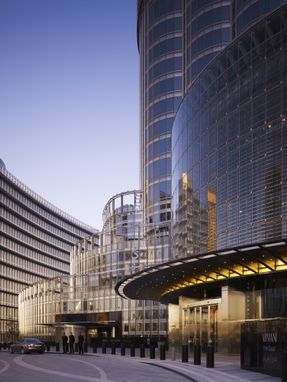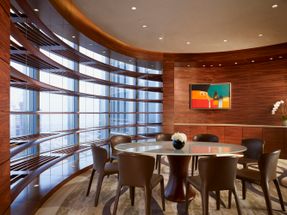Burj Khalifa
ARCHITECTS
SOM
GRAPHICS
Emerystudio
SURVEYING
Emirates Nortech Surveys
ESCURITY SYSTEM
Sinclair Knight Merz Consulting
LIGHTING
Fisher Marantz Stone
STRUCTURAL ENGINEERING
SOM
MANUFACTURERS
Hunter Douglas Architectural (Europe), Agorex Pro-line, Campolonghi, Ceresit, Doka, Giacomini, Guardian Glass, Hansgrohe, Otis, Rondo, TERRACO, Hunter Douglas Brasil, Hunter Douglas Architectural (Europe)
GENERAL CONTRACTOR
Samsung Corporation / Dubai Contracting Company LLC
CONSTRUCTION MANAGER
Turner International
MEP
SOM
INTERIOR DESIGN
SOM
WIND ENGINEERING
RWDI Inc.
ACOUSTICAL / AUDIO VISUAL / TELECOMMUNICATIONS
Pelton Marsh Kinsella
FIRE & LIFE SAFETY
The RJA Group, Inc.
EXTERNAL WATER FEATURES
Crystal Fountains 8 Elevators: Lerch, Bates & Associates Inc.
FOD SERVICES
Trend Foodservice Design
FACADE MAINTENANCE
Lerch, Bates & Associates Inc., Facade Access Consulting, Citadel Consulting
GEOTECHNICAL
Hyder International
LANDSCAPE
Cracknell Landscape Design LLC
PARKING
Walker Parking
INTERIOR WATER FEATURES AND POOLS
PA EMS, Ltd.
AREA
454249.0 m²
YEAR
2010
LOCATION
Dubai, United Arab Emirates
CATEGORY
Skyscrapers
Text description provided by architect.
Soaring 828 meters above the metropolis of Dubai, the Burj Khalifa is the world’s tallest building.
The design for the 162-story tower combines local cultural influences with cutting-edge technology to achieve high performance in an extreme desert climate.
The centerpiece of a large mixed-use development, the Burj Khalifa contains offices, retail space, residential units, and a Giorgio Armani hotel.
As the tower rises from a flat base, setbacks occur in an upward spiraling pattern, reducing the building’s mass as it reaches skyward.
At ground level, the skyscraper is surrounded by green space, water features, and pedestrian-friendly boulevards.
The tower’s overall design was inspired by the geometries of a regional desert flower and the patterning systems embodied in Islamic architecture.
Built of reinforced concrete and clad in glass, the tower is composed of sculpted volumes arranged around a central buttressed core.
Beyond its record-breaking height, the Burj Khalifa incorporates new structural and construction efficiencies to reduce material usage and waste.
These include a “sky-sourced” ventilation system, in which cool, less humid air is drawn in through the top of the building.
The tower also has one of the largest condensate recovery systems in the world.
















































